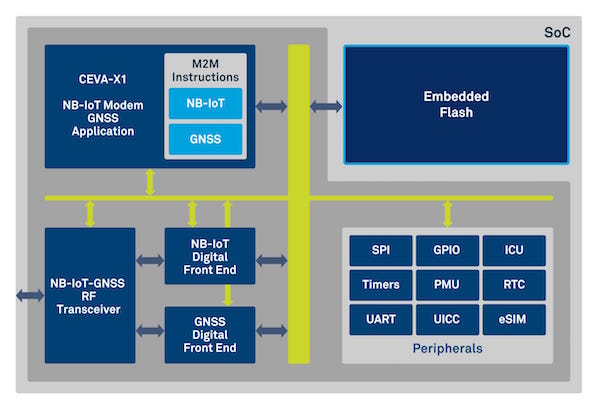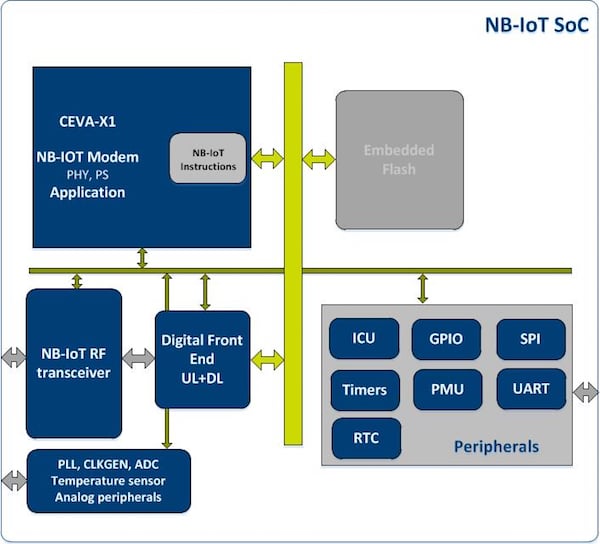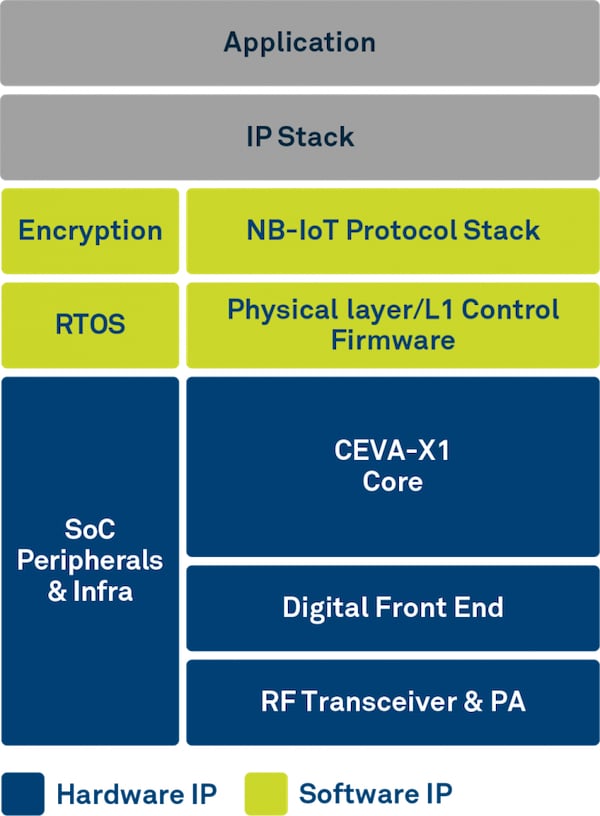Through smartphones and tablets, mobile wireless communication has revolutionized the way people work. The wide-area wireless connection makes it possible to access internet services from almost anywhere. The next step is to bring the power of wireless to machine type communications (MTC). This will drive a revolution in services that will span sectors as diverse as manufacturing, city management, transportation, and energy.
Sensors along roads will communicate information on traffic flow to passing vehicles to keep them moving freely. The same data will inform customers of when they can expect deliveries to arrive. Other sensors in fields nearby will keep track of moisture and pollution levels to ensure that the air remains healthy and plants receive enough water and nutrients. All of those sensors will use wireless communications to stay in touch with servers in the cloud. And they will use other wireless services such as the Global Navigation Satellite System (GNSS) networks to keep track of their location.
Location awareness is vital not just for mobile sensors, such as those in delivery trucks, but in environmental sensors that remain fixed for much of their operational life. The location awareness reduces deployment costs by allowing them to report precisely where they are installed without operator intervention. And they can signal when one has been moved inadvertently or deliberately.

Necessity of LPWAN
To make widespread distribution of sensors and IoT nodes possible, support for low-power wide-area network (LPWAN) usage is a necessity. Many existing IoT applications have been built around short-range protocols such as 6LowPAN, Bluetooth and Zigbee. But all are restricted to a range of a few hundred meters. That is insufficient for the new generation of massive MTC systems.
Protocols designed for LPWAN applications offer the ability to communicate with nodes a kilometer or more from the nearest gateway or peer. Such a range massively reduces deployment costs not only for devices such as environmental sensors needed for agriculture or IoT nodes used to monitor roads, railways and rivers but for smart meters in homes. In addition, the frequencies typically used for LPWAN makes it possible to reach devices that are buried underground or sit in cellars without having to deploy additional, expensive gateways.
A number of options are available for MTC implementations, with both unlicensed and licensed spectrum access. LoRA operates in unlicensed spectrum with datarates of up to 12.5kbit/s. Unlicensed spectrum appears to offer lower operational costs. But, for practical purposes, users will still need to either deploy their own gateways or rent access from third-party providers. Relying on unlicensed spectrum also leads to a higher risk of interference from other users of the same spectrum. Furthermore, LoRA technology is licensed in a way that restricts silicon support to a handful of suppliers, preventing integration into custom low-cost single-chip IoT controllers.
Cellular increases options
Cellular communications, on the other hand, with its use of licensed spectrum has much protection against interference, offers more overall flexibility and much greater freedom for silicon integration. The 3GPP standards group has defined a number of IoT-ready protocols, the most recent of which is Narrowband-IOT (NB-IoT). This offers the ability to provide signals that penetrate underground. This is similar to the Enhanced Coverage form of GSM. NB-IoT improves the datarate from 10kbit/s to 50kbit/s. This enhancement will be used to not only improve system performance but to save energy.
Throughout the standardization process by the 3GPP there has been a focus on energy efficiency. Enhancements continue to be made to improve performance. For example, for Release 14 of the NB-IoT standard, the 3GPP committee experts found it was better to maintain relatively high throughput during transmission rather than restricting the bitrate. This allows the IoT node to finish transmission and go into a power-saving sleep mode much more quickly. This leads to less power being consumed during transmission, which is predominantly driven by the power amplifier (PA). Operators have committed to deploying Release 14 as quickly as possible, ensuring devices that begin development today will be supported on real-world networks.
An NB-IoT architecture
To support NB-IoT, an efficient computing architecture is needed to handle, on a unique processor, the signal processing required by higher peak datarates, the modem protocol stack and the sensor application code. If all three tasks can fit on the same processor subsystem, it saves silicon costs and power compared to dual-processor implementations. Analysis of cellular IoT standards by CEVA found dedicated instructions applied to a high-throughput pipeline provided better overall performance within a strict power budget than through the use of hardware accelerators external to the core.

The CEVA-X1 processor combines specialized instructions for NB-IoT operations with a very long instruction word (VLIW) single instruction multiple data (SIMD) architecture to provide efficient support for LPWAN-compatible IoT nodes. The processor uses up to ten pipeline stages to support DSP-intensive sections of code and adds a number of design enhancements to support the branch-intensive code needed not just for protocols such as NB-IoT but also for embedded control. The result is a processor able to support the requirements of NB-IoT without the need for additional coprocessors.
In a silicon implementation running at 150MHz, half of the processor capacity remains available for applications use even while the processor is actively transmitting or receiving data over an NB-IoT channel.
Full platform for NB-IoT
Taking things a step further, CEVA’s Dragonfly NB platform leverages the CEVA-X1 processor and provides, with partner’s ASTRI, software support and peripherals tuned for energy-efficient IoT nodes. Recognizing the need for location awareness for many LPWAN-compatible IoT node applications, the RF transceiver in the platform supports both cellular and GNSS signals. A low intermediate-frequency architecture that converts RF to baseband allows integration and direct connection to a digital front-end unit (DFE). The transceiver provides an on-chip digital oscillator to avoid the need to use a more costly off-chip voltage-controlled temperature compensated device.

The DFE provides up and downsampling filters, maintains synchronization with the base station and moves data in and out of processor memory space automatically to minimize software intervention and further save power.
A complete software stack provides end-to-end support for NB-IoT and GNSS, complete with a RTOS to manage both communications and user application tasks. The result is a platform that provides the support needed to deploy IoT applications rapidly that are built for this new generation of massive MTC systems.
Industry Articles are a form of content that allows industry partners to share useful news, messages, and technology with All About Circuits readers in a way editorial content is not well suited to. All Industry Articles are subject to strict editorial guidelines with the intention of offering readers useful news, technical expertise, or stories. The viewpoints and opinions expressed in Industry Articles are those of the partner and not necessarily those of All About Circuits or its writers.






No comments:
Post a Comment